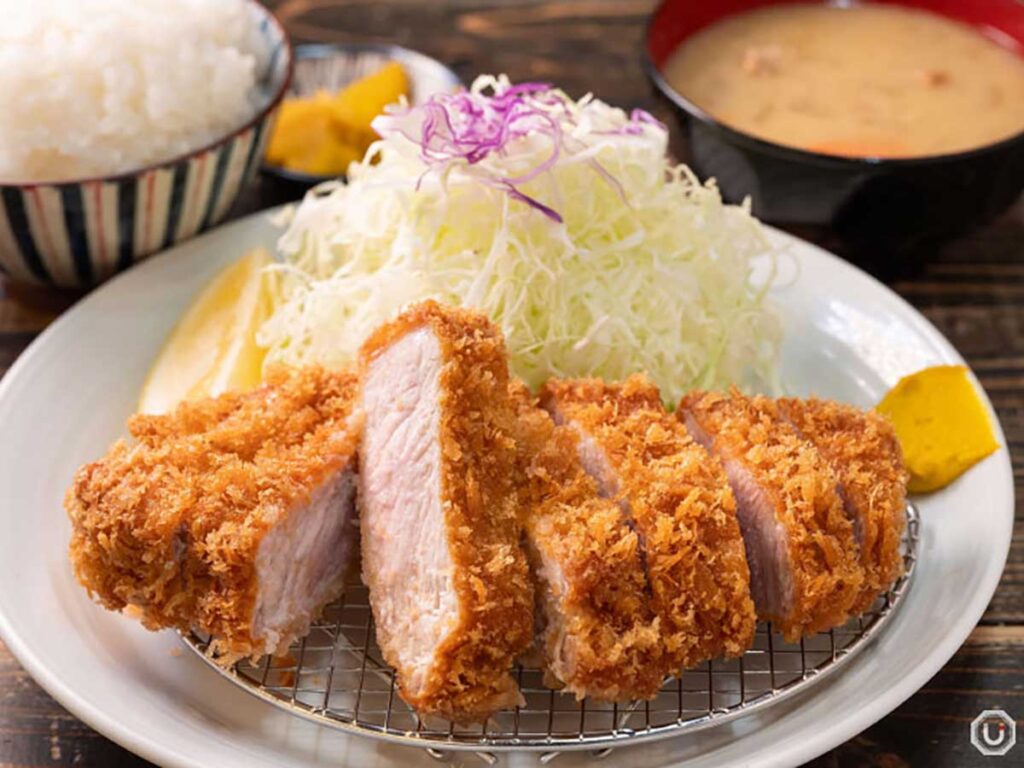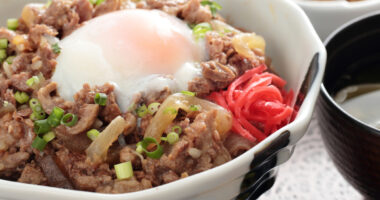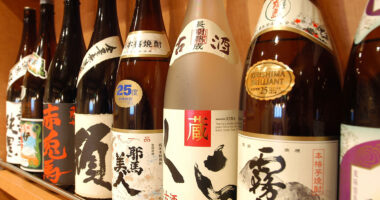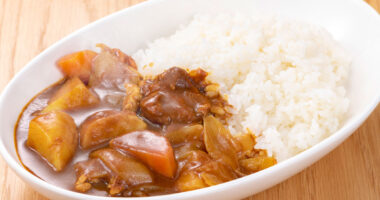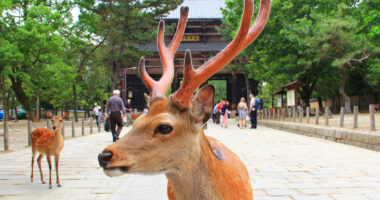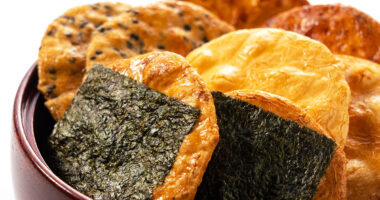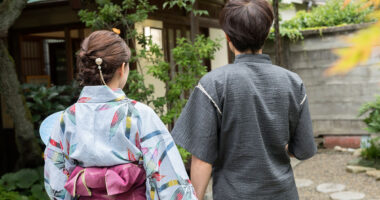Crispy, juicy, and deeply satisfying, the breaded deep-fried cutlet known as katsu is a cornerstone of Japan’s yōshoku (Western-influenced Japanese cuisine). The simple but perfected process involves coating a primary ingredient—typically meat, but also fish or vegetables—in a layer of flour, egg, and breadcrumbs before frying it to a perfect golden brown.
Though its origins lie in the West, the cutlet was introduced to Japan during the Meiji era (1868–1912) and underwent a uniquely Japanese evolution. Today, the world of katsu is incredibly diverse, from the classic tonkatsu (pork cutlet) to lighter chicken katsu and savory menchi katsu (ground meat cutlet). It serves as the star in beloved dishes like katsudon (cutlet over rice) and the popular katsu sando (cutlet sandwich). For any visitor to Japan, exploring katsu is an essential—and delicious—part of understanding the nation’s modern food culture.
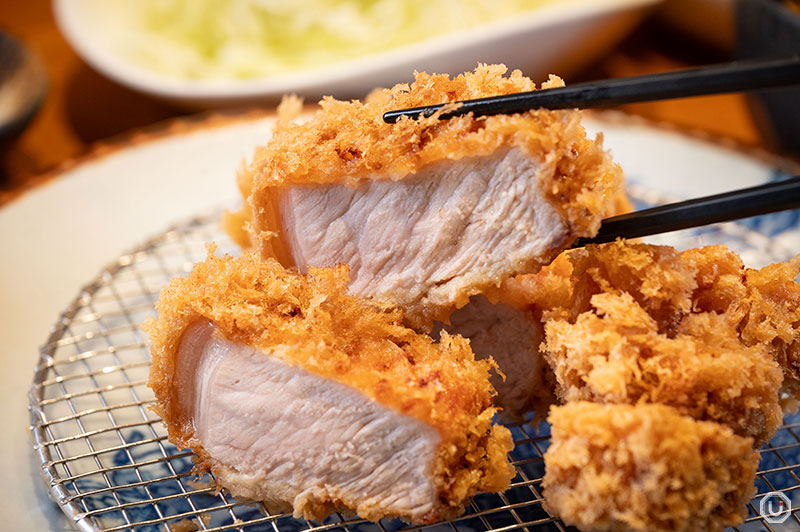
Premium Rosukatsu (loin cutlet) at “Butagumi Shokudou”
The history and cultural background of katsu
The story of katsu is closely tied to Japan’s modernization during the Meiji era. Arriving alongside Western culture, it helped transform the Japanese diet and remains a beloved staple to this day.
Arrival from the West and Japanese evolution
Katsu traces its roots to the late 19th century, when Western-style cutlets first arrived in Japan from countries like France and Austria during the Meiji period’s wave of modernization. The French côtelette de veau (veal cutlet) is often cited as a direct ancestor. In 1899, a restaurant in Tokyo’s upscale Ginza district is said to have served the first deep-fried version. However, Japanese chefs didn’t simply copy the recipe; they began a process of adaptation, subtly refining the dish to suit local palates.
The Meiji government’s promotion of Western cuisine encouraged livestock farming and the use of cooking oils. This official support helped katsu gradually take root in Japanese food culture. By blending Western methods with a distinct Japanese culinary sensibility, the dish we now recognize as katsu was born.
Distinctive Japanese features and development
What truly sets Japanese katsu apart from its European counterparts is the breading. Coarse breadcrumbs developed in Japan produce an incomparably light and airy crunch. This signature texture is the defining feature that transformed the Western cutlet into a distinctly Japanese creation.
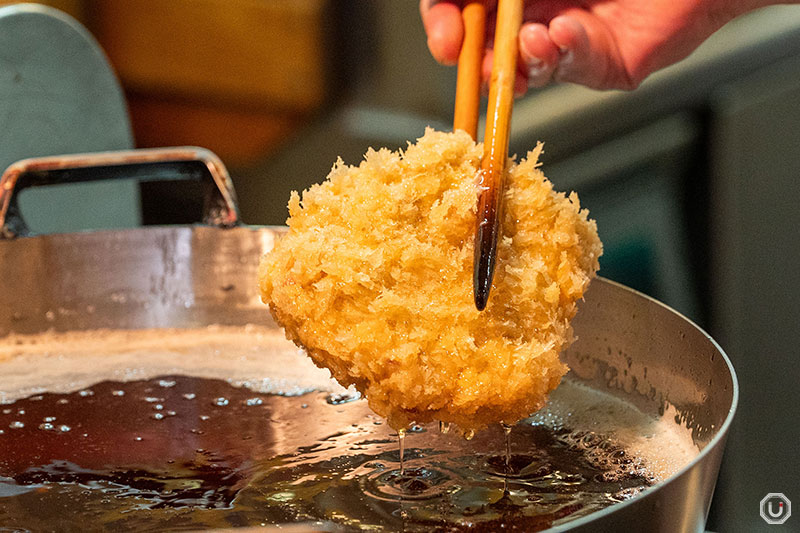
Cutlet being fried at “Ponta Honke”
Beyond its culinary merits, katsu holds a special cultural significance. Its name is a homophone for the verb katsu (勝つ), meaning “to win.” This happy coincidence has turned it into a popular good-luck meal. It’s a common tradition to eat katsu before a big exam or an important match, a custom that beautifully illustrates how deeply food and symbolism are intertwined in Japanese culture.

Yoshihiko Shimada, fourth-generation owner of Ponta Honke
Types and characteristics of katsu
Japan today offers a remarkable variety of katsu, each with its own unique appeal. While the cooking method is consistent, the choice of ingredient and cut can dramatically alter the flavor and texture.
Representative meat cutlets
Without a doubt, tonkatsu is the most iconic form of Japanese katsu. Made with pork, it typically offers two main choices that create distinct dining experiences. Rōsu (loin) is prized for its marbling, which yields a rich, juicy flavor. In contrast, hire (fillet or tenderloin) is much leaner, offering a supremely tender and more delicate taste. Part of the joy of tonkatsu is discovering which cut you prefer.
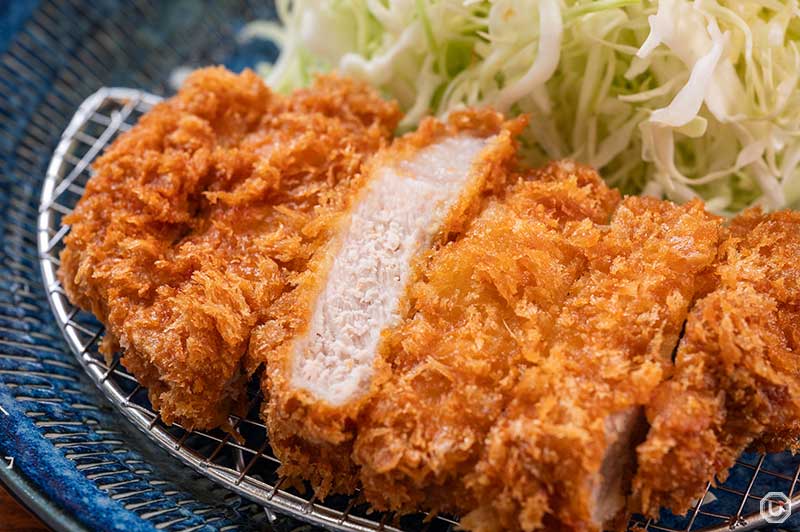
Pork loin cutlet set meal (Kurobuta) at Tonkyū
Chicken katsu offers a lighter profile and is a popular lower-fat option, often made with breast meat. Menchi katsu, which uses ground mixed meat, provides a rich flavor and a texture reminiscent of a hamburger patty. For a more luxurious taste, beef katsu is another beloved favorite.
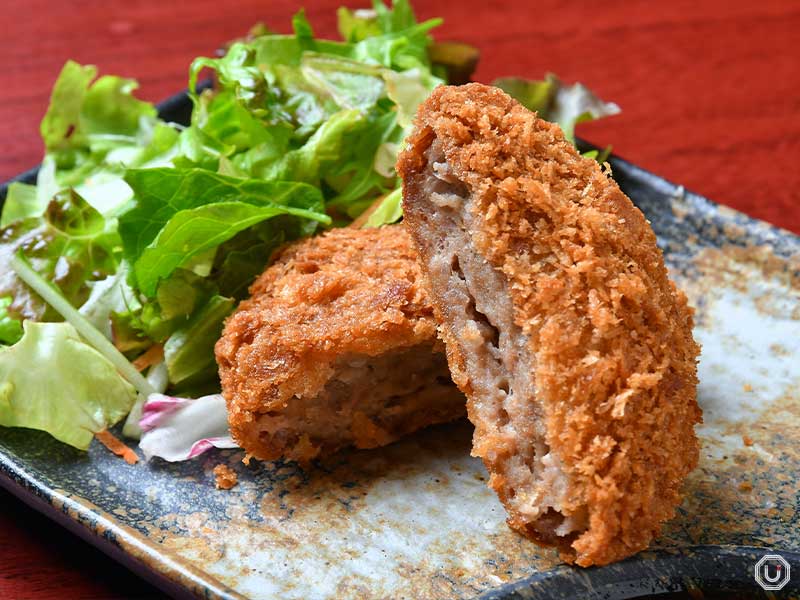
Agu Pork Menchi Katsu at “Taketomijima”
Katsu varieties
| Type | Main ingredient | Features |
|---|---|---|
| Tonkatsu | Pork loin / fillet | Juicy and hearty |
| Chicken katsu | Chicken breast / thigh | Light, refreshing flavor |
| Beef katsu | Beef | Rich, luxurious taste |
| Menchi-katsu | Ground mixed meat | Hamburger-like texture |
| Ham katsu | Ham | Casual and familiar |
In recent years, seafood and vegetable katsu have also gained popularity. White fish and salmon are common choices for fish katsu, while vegetables like eggplant and kabocha squash are frequently used. Many regions also feature their own local variations using specialty ingredients, highlighting the incredible versatility of the katsu cooking style.
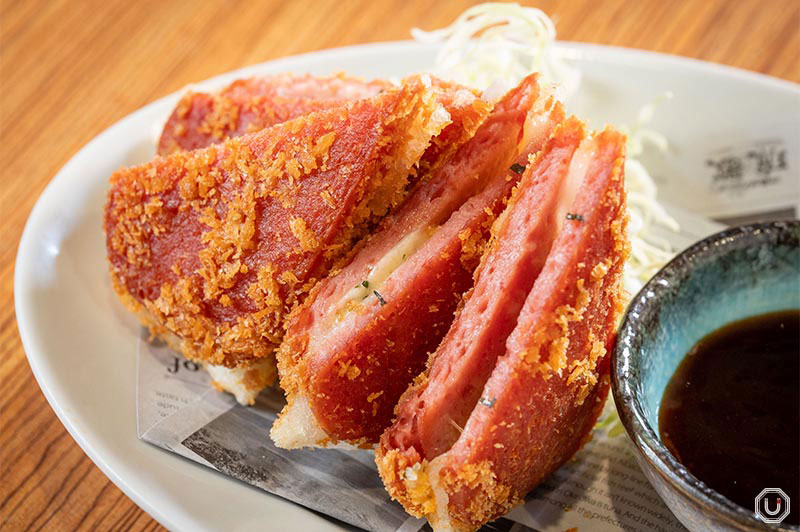
Spam Katsu at “Okinawa Dining Ryūka Roppongi”
Kushi katsu: a special form
Hailing from Japan’s Kansai region, kushi katsu consists of bite-sized ingredients skewered and fried. This format is perfect for sampling a wide variety of ingredients—from meat to vegetables and seafood—in one sitting, making for a fun and interactive meal.
How to eat katsu and dining manners
To fully appreciate katsu, it helps to know the customary ways it’s served and enjoyed. Understanding these basics can elevate the experience and offer a deeper insight into Japanese food culture.
Basics: how to eat and what’s in the set
When you order katsu as a set meal, it almost always comes with a few key companions: a heaping pile of finely shredded cabbage, a bowl of steamed rice, and miso soup.
Eating the shredded cabbage alongside the katsu is essential; it helps cut through the richness of the fried cutlet and provides a clean, refreshing counterpoint. Cabbage also contains digestive enzymes, making it an ideal partner for fried foods.
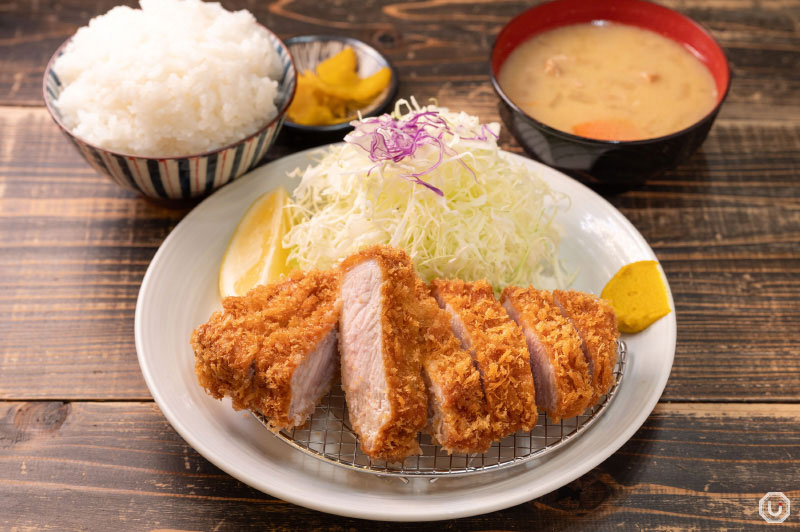
Top Loin Katsu Set at Tonkatsu Aoki Asakusabashi
Most restaurants serve their own house-made katsu sauce, with recipes varying from thick, Worcestershire-style sauces to lighter, fruit-based versions. Beyond the standard sauce, many people also enjoy their katsu simply seasoned with a pinch of salt or a squeeze of lemon.
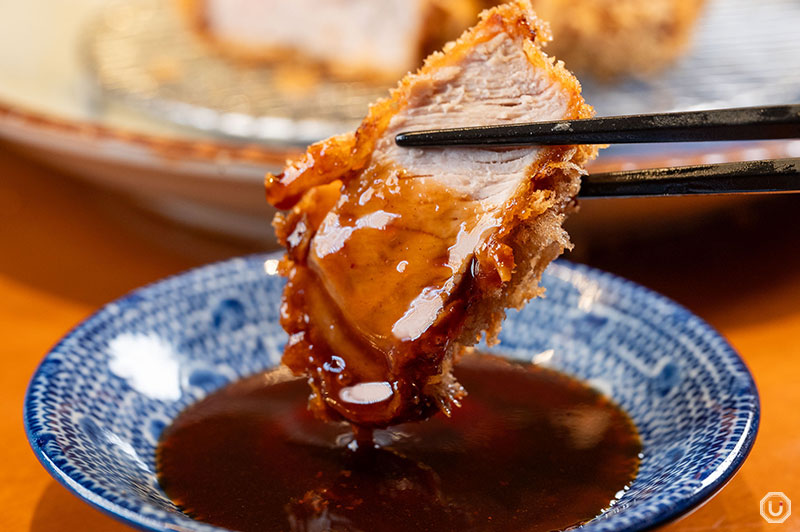
Adding sauce to Premium Rosukatsu (loin cutlet) at Butagumi Shokudou
Serving styles
Katsu isn’t just eaten on its own as part of a set meal; its versatility has led to a number of iconic dishes.
A beloved comfort food, the original katsudon features a cutlet simmered with egg and served over rice. It rose to popularity in Japan around 1948.

The katsudon in the Katsudon Set at “Shinshuya Shinjuku South Exit”
The katsu sando is said to have been created in Tokyo’s Ueno district around the mid-20th century as a stylish and easy-to-eat meal.

“Pork Cutlet” sandwich available at FamilyMart
Another hallmark of yoshoku, katsu karē (katsu curry) emerged in Tokyo in the early to mid-20th century. This hearty dish, which pairs a crispy cutlet with Japanese curry and rice, quickly spread via Western-style restaurants.
All of these dishes demonstrate how a rich food culture can develop from a single cooking method. Katsu is a prime example of Japanese culinary creativity.

Roast Katsu Curry at “Tonkatsu Aoki Asakusabashi”
Dining manners and ways to enjoy
When eating katsu, it’s best to follow general Japanese dining etiquette. If your katsu isn’t pre-sliced, use your chopsticks to break it into manageable pieces. As with any meal in Japan, try to eat quietly and be mindful of other diners.
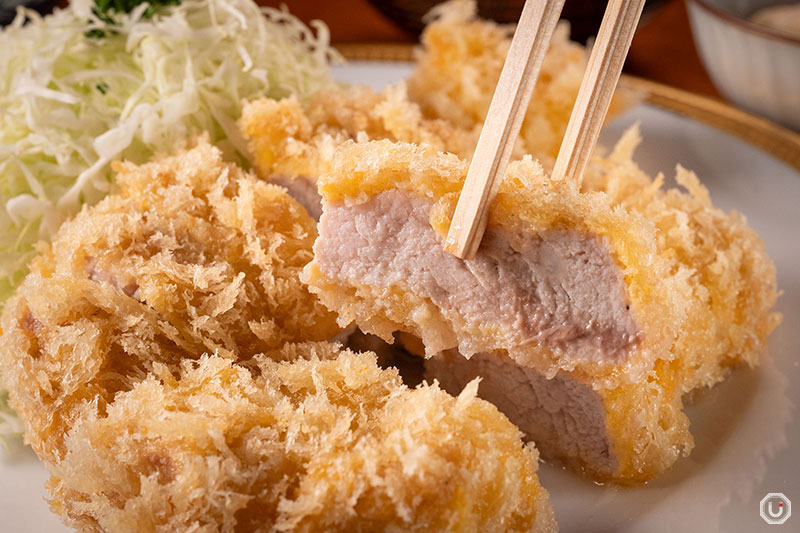
“Cutlet à la carte” served at Ponta Honke
There are also various preparation techniques that affect the final dish. For example, frying katsu slowly at a low temperature can reduce oiliness while keeping the meat exceptionally tender. Another method, double-frying, creates an extra-crisp exterior while sealing in the juices.
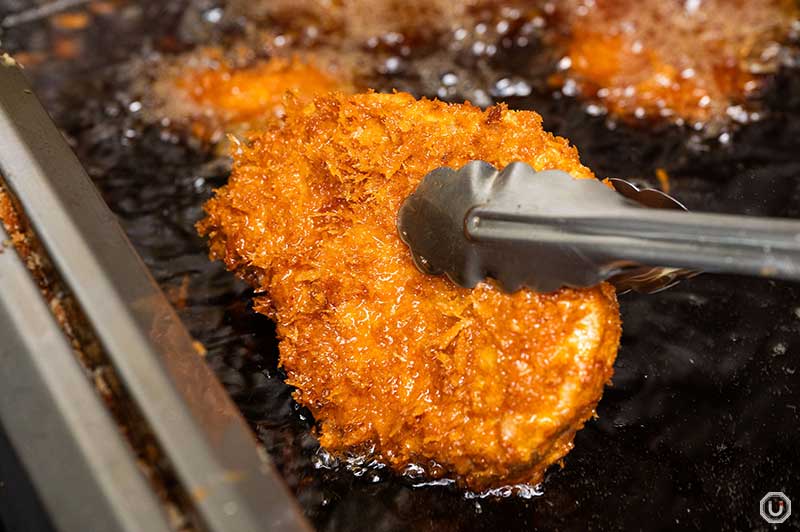
Pork loin slowly fried at a low temperature at Tonkyū
The cultural significance of katsu and its place today
In Japan, katsu is more than just a meal—it’s a dish imbued with cultural meaning. Over its long history, it has become deeply connected to the daily lives and values of the Japanese people.
As a symbol of yoshoku culture
Katsu stands as a powerful symbol of yoshoku, perfectly embodying the fusion of cultures that began in the Meiji era. It tells the story of how Japan not only adopted Western techniques but masterfully refined them with a unique Japanese sensibility. This process of creative adaptation is a hallmark of Japan’s modernization, and katsu is one of its most delicious and enduring examples.
As a quintessential yoshoku dish, katsu is enjoyed in countless settings, from fine-dining restaurants and cozy neighborhood eateries to home kitchens and convenience stores. Its wide-ranging appeal reflects both the richness of Japan’s food culture and the nation’s lasting love for the dish.
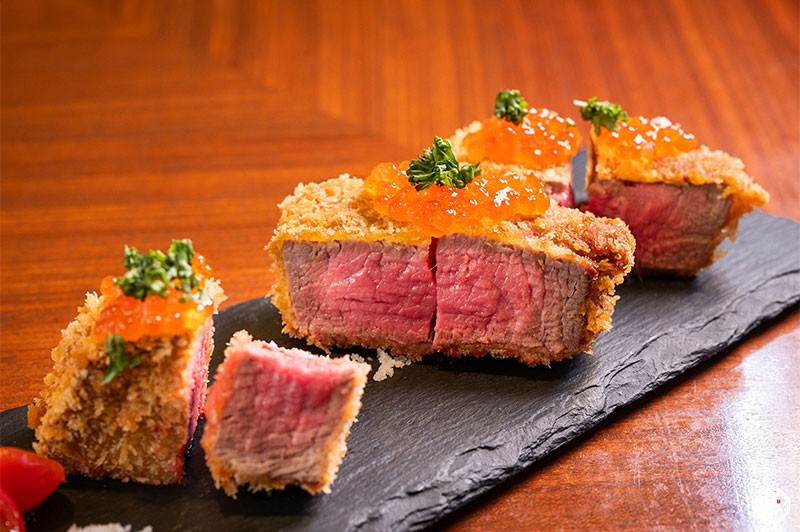
Beef Tenderloin Cutlet at GRALIC
Cultural value as a good-luck food
The wordplay on “katsu” (to win) has given rise to a good-luck tradition unique to this dish. Before major exams or important competitions, people all across Japan eat katsu to channel success—a practice that goes beyond superstition to show a deep belief in the symbolic power of food.
This cultural connection is so strong that katsudon has become a recurring motif in Japanese media. It frequently appears in films, TV dramas and commercials as the go-to meal for students cramming for exams or characters facing a major challenge, reinforcing its status as the ultimate comfort food for victory. This imagery is a testament to how deeply the idea of katsu as a good-luck charm is embedded in the national consciousness.
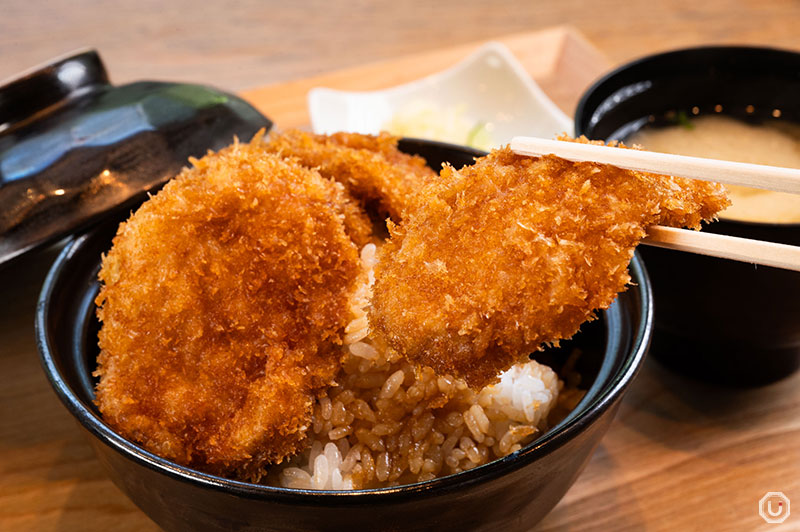
Double Layer Pork Katsu-don (lunch version) at “Niigata Katsudon Tarekatsu”
Diversity and globalization today
While honoring its traditions, katsu culture continues to evolve. Chefs are constantly innovating with healthier cooking methods and creating new regional specialties using local ingredients, ensuring the dish remains relevant and exciting.
Internationally, dishes like the katsu sando and katsu curry have become popular ambassadors for Japanese food. As products of the yoshoku tradition, they serve as accessible and delicious cultural bridges for people unfamiliar with Japanese cuisine. For visitors to Japan, katsu is a key entry point to the diversity and creativity that define the nation’s culinary landscape.
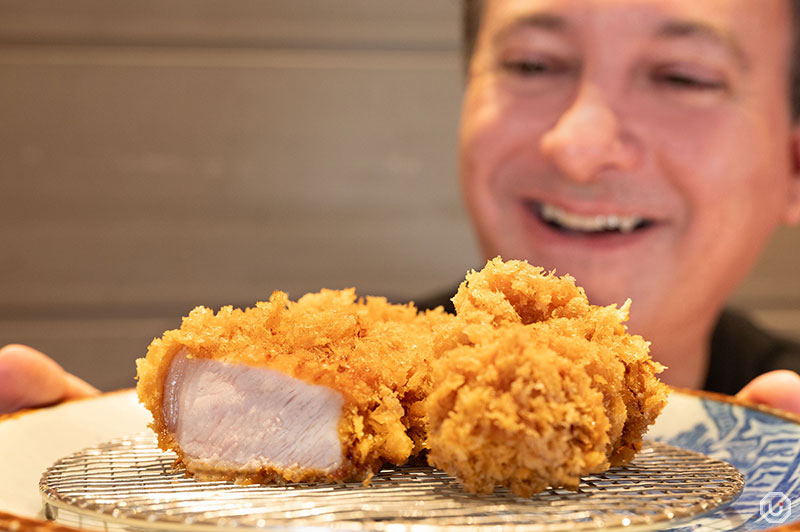
An Umami Bites writer amazed by the thickness of the Premium Rosukatsu (loin cutlet) at Butagumi Shokudō
Summary
Katsu is a definitive dish of Japan’s yoshoku culture—a Western-style cutlet that, after arriving in the Meiji era, evolved in a way that was uniquely Japanese. While tonkatsu is its most famous form, the world of katsu includes everything from chicken and menchi-katsu to seafood and vegetables, each with its own distinct appeal.
It is enjoyed in an array of beloved dishes—like katsudon, katsu-sando, and katsu karē—and is traditionally served with shredded cabbage and specialty sauces that reflect Japanese dining customs. Thanks to a clever play on words with the verb “to win,” it is also cherished as a good-luck dish, holding an important place in Japanese society and culture.
For international visitors, katsu is an indispensable way to experience the diversity and creativity of Japanese food culture—a delicious fusion of Western technique and Japanese sensibility.
